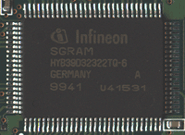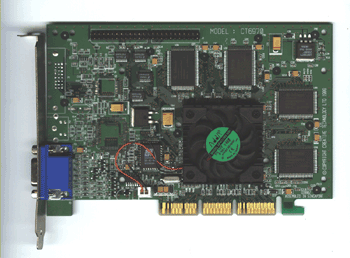Creative Labs 3D Blaster Annihilator Pro GeForce DDR
by Matthew Witheiler on February 23, 2000 12:08 PM EST- Posted in
- GPUs
As we have seen with many companies attempting to place a DDR on the market early, Creative Labs choose to use the NVIDIA reference design when producing the 3D Blaster Annihilator Pro. By doing this, Creative Labs not only keeps their costs and production time down (due to the fact that not much research and development is involved) but also allows them to produce a stable card. The down side of using such a production model is the fact that this leaves the 3D Blaster Annihilator Pro almost indistinguishable from the rest of the DDR card pack. It seems that many manufacturers are taking this path, as is displayed by the fact that of the DDR cards reviewed at AnandTech only ASUS offers a non-reference design board.
As is common with other reference design boards, the GeForce GPU is cooled via the commonly found low profile fan and heatsink. The heatsink is then attached to the GPU with thermal glue, a cooling setup that we do not normally consider ideal when compared to the thermal grease used by other manufacturers. We would suspect that thermal glue and a low profile generic heatsink/fan stack would prove to be fine at the stock core speed of 120 MHz but that the card would not excel at overclocking. Much to our surprise, in the case of the 3D Blaster Annihilator Pro this does not turn out to be the situation; more about this is described in the overclocking section.
Finally are the DDR RAM chips
used on the 3D Blaster Annihilator Pro. Like every other DDR GeForce that has
found its way into the lab, the 3D Blaster Annihilator Pro uses 6 ns Infineon
DDR SGRAM chips.
Rated at 166 MHz, the RAM comes at NVIDIA's suggested clock speed of 300 MHz (150
MHz x 2). It seems that Infineon (formally SIEMENS Semiconductors) is the only
company that is able to produce DDR RAM chips for use in graphics cards at a high
enough volume, thus providing their stronghold on the market. This fact decreases
variety in the DDR market but at the same
time ensures that your RAM will not be quickly replaced by faster DDR RAM chips
(as Infineon currently only produces 6 ns DDR SGRAM chips).













0 Comments
View All Comments